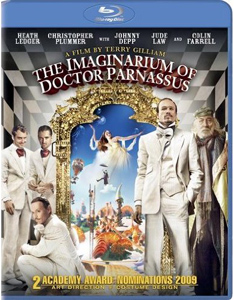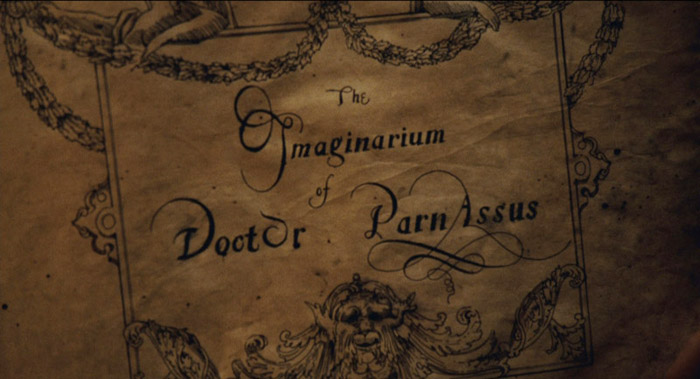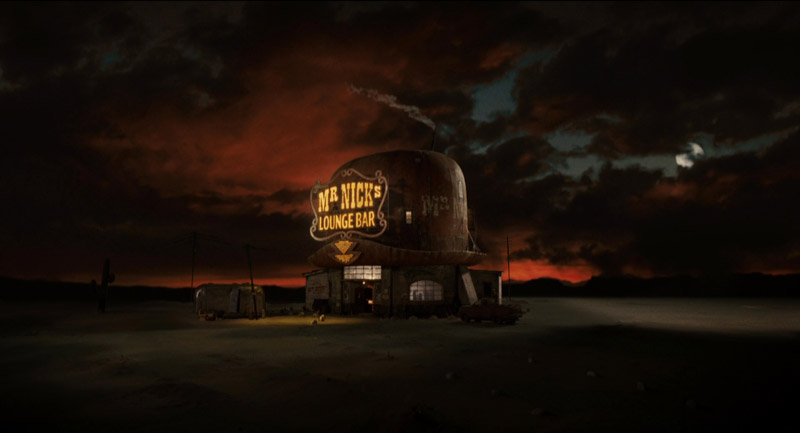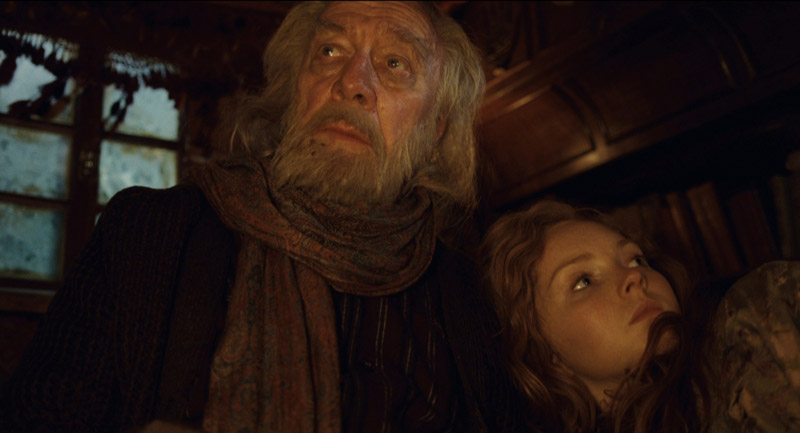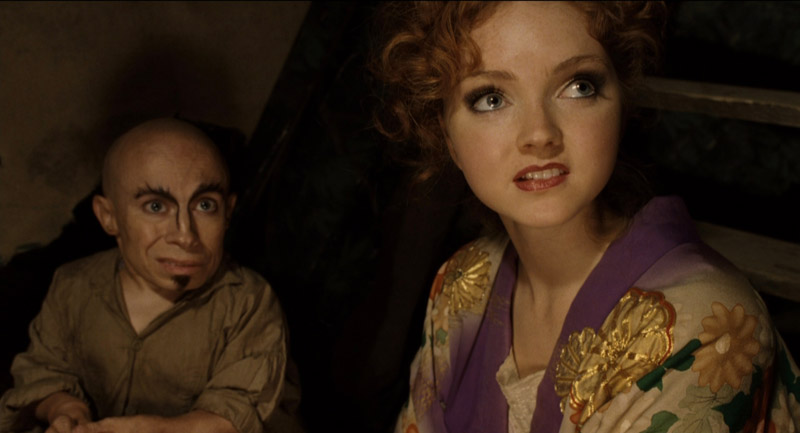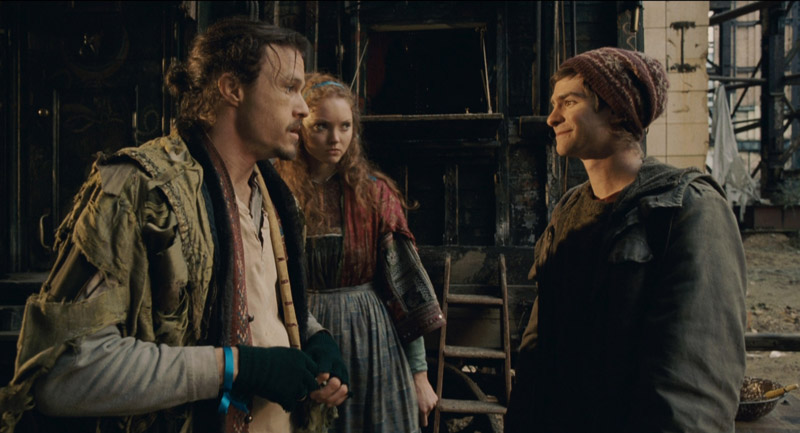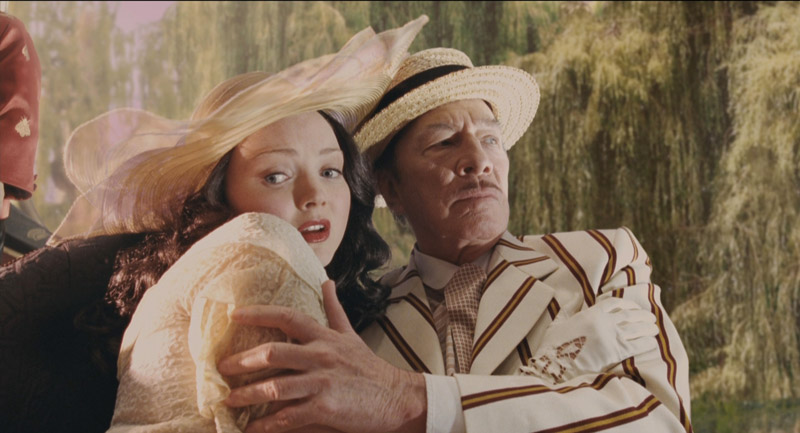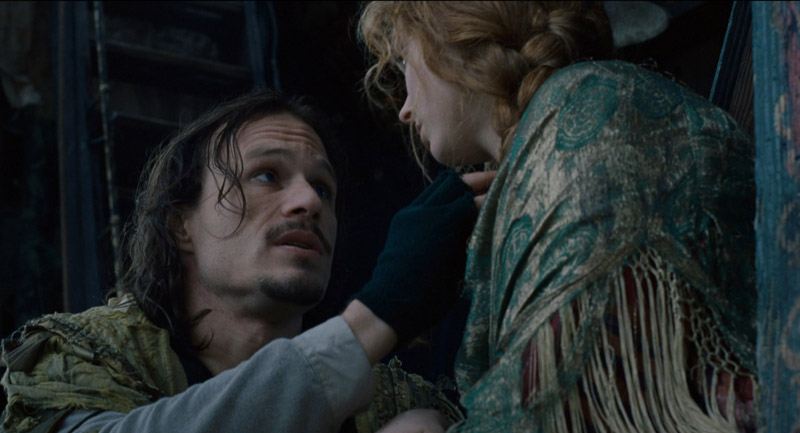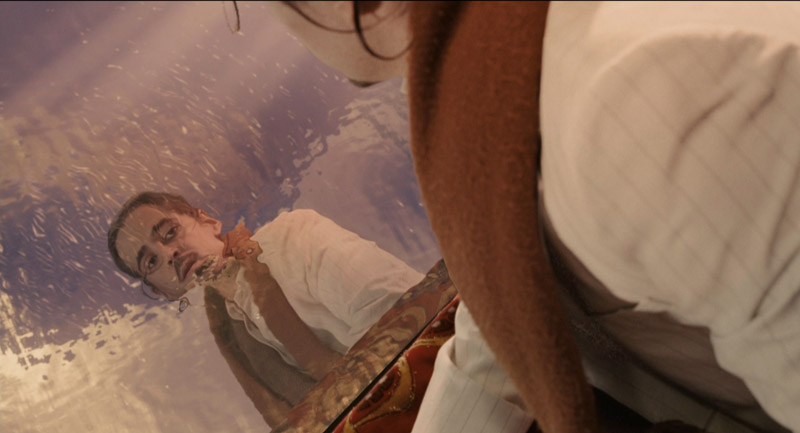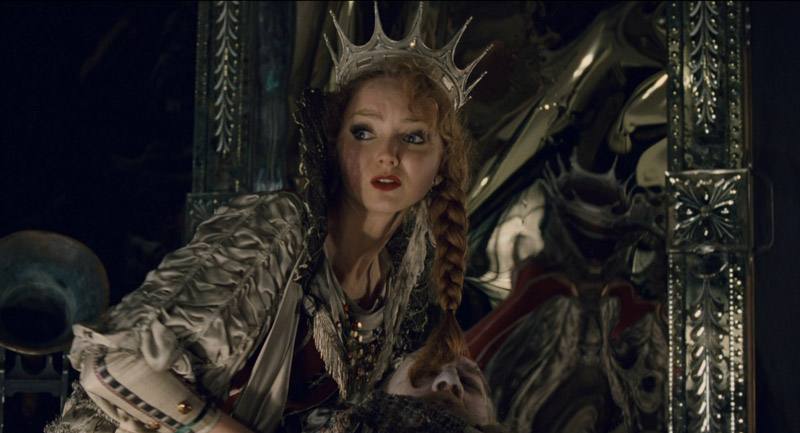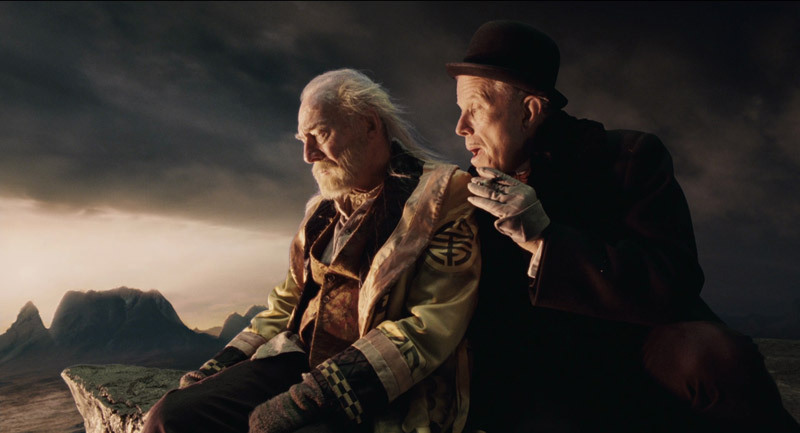Review by Leonard Norwitz
Studio:
Theatrical: Infinity Features, Poo Poo Pictures & Davis
Films
Blu-ray: Sony Pictures Home Entertainment
Disc:
Region: FREE!
(as verified by the
Momitsu region FREE Blu-ray player)
Runtime: 2:02:50.404
Disc Size: 45,486,894,113 bytes
Feature Size: 30,754,480,128 bytes
Video Bitrate: 20.91 Mbps
Chapters: 16
Case: Standard Blu-ray case
Release date: April 27th, 2010
Video:
Aspect ratio: 2.35:1
Resolution: 1080p / 23.976 fps
Video codec: MPEG-4 AVC Video
Audio:
DTS-HD Master Audio English 3960 kbps 5.1 / 48 kHz / 3960
kbps / 24-bit (DTS Core: 5.1 / 48 kHz / 1509 kbps / 24-bit)
DTS-HD Master Audio Portuguese 2139 kbps 5.1 / 48 kHz / 2139
kbps / 16-bit (DTS Core: 5.1 / 48 kHz / 1509 kbps / 16-bit)
DTS-HD Master Audio Spanish 2084 kbps 5.1 / 48 kHz / 2084
kbps / 16-bit (DTS Core: 5.1 / 48 kHz / 1509 kbps / 16-bit)
Dolby Digital Audio Catalan 640 kbps 5.1 / 48 kHz / 640 kbps
Dolby Digital Audio Spanish 640 kbps 5.1 / 48 kHz / 640 kbps
Dolby Digital Audio English 192 kbps 2.0 / 48 kHz / 192 kbps
Subtitles:
English (SDH), English, Catalan, Danish, Finnish, Norwegian,
Portuguese, Spanish, Swedish, none
Extras:
• Audio Commentary by Writer/Director Terry Gilliam
• Deleted Scene in HD (4:21)
• Behind the Mirror – in HD (3:25)
• The Imaginarium of Doctor Parnassus – in HD (6:30)
• Building the Monastery – in HD (7:10)
• "The Drunk" Multi Angle Progression – 2:10
• Artwork of Dr. Parnassus – in HD (4:20)
• Heath Ledger & Friends – in HD (5:40)
• Heath Ledger Wardrobe Test – in HD (2:00)
• Interview with Heath Ledger – in HD (3:05)
• Dr. Parnassus Around the World - in HD (5:50)
• Presentation of Cast & Crew – in HD (8:20)
The Film:
8
To say that Terry Gilliam is the most imaginative
writer/director of the past four decades is as like saying
Ingmar Bergman is the most important Swedish director.
Gilliam had his share of less than successful adventures
(The Brothers Grimm, Fear and Loathing in Las Vegas) but he
also directed and wrote or co-wrote Monty Python and the
Holy Grail and Brazil - along with Blade Runner, the darkest
and most provocative science fiction film of our generation
- and re-imagined Chris Marker's La Jetée in the person of
Twelve Monkeys.
It's hard to separate out the effect of Heath Ledger's death
from the final cut. I think it's fair to say, however, that
Gilliam's solution to having his star die midway thorough
filming is, if nothing else, ingenious – up to a point. I'll
come back to this presently, but first a few words about the
plot: For all its fantastical diversions, the story is a
version of the Faust tale: Doctor Parnassus (Christopher
Plummer) is a thousand year old monk who long ago made his
pact with the Devil (Tom Waits). Parnassus gets immortality
and the Devil waits his turn, which comes in time in the
form of the Doctor's daughter, Valentina (Lily Cole). As our
story opens in more or less the modern era, Valentina is
only a few days from her 16th birthday, and Mr. Nick (aka,
the Devil) appears to remind "Parny" of his agreement.
Parnassus has, for some while, been reduced to putting on a
traveling carnival act with his daughter, a sarcastic but
loyal dwarf (Verne Troyer) and a barely grown up former
street urchin named Anton (Andrew Garfield). Anton hawks
customers (of whom there are precious few) to walk through
the Doctor's magic mirror for a voyage into a unique
imagination - "Only one Imagination per customer, please" –
where one's inmost self, for good or evil – their choice -
is manifest.
Into the carnival act's subsistence existence drops Tony
(Ledger), by a rope, hanging from a bridge. Val and Anton
rescue the man who claims to have lost his memory, and
perhaps he has. Tony joins the troupe and helps them find
ways to becoming more successful. Anton, who secretly pines
for Valentina, doesn't much like this interloper and is
gratified to learn that Tony has a questionable past to say
the least. But Tony is by far the more charismatic suitor
while all Anton can do is act surly. And as Val's birthday
nears, Mr. Nick closes in.
The question of choice is central to the story, and each
character in turn is challenged with life-changing choices.
Gilliam, too, had to make his: what to do about Tony once
his actor passed on to another plane. His solution is a
clever one, and might have worked if . . . There are two
prominent "realities": one on each side of the mirror.
Nearly all of Ledger's work on one side was filmed before he
died and since the other side was "imagined" anyhow, why not
substitute another actor for the scenes inside the
Imaginarium? Better yet, and to avoid the impression that
this wasn't as originally scripted, why not three substitute
Tonys! Thus: Johnny Depp, Jude Law and Colin Farrell, who,
each in turn, does a subtle double take as they realize they
are not Ledger. Farrell is the least impressed by the change
in his appearance, but then his manifestation is the most
willful, and the most dangerous.
The only difficulty in this scenario is that, given the
strength of his character, we expect Ledger as Tony to
reappear somewhere, and he doesn't. He just disappears. It's
not something we can fail to notice. The final film, then,
is a re-imagining of Gilliam's original vision, and - as in
the case of the attempts to complete Mahler's Tenth Symphony
– I am grateful for the effort, however flawed. . .
. . . which brings me to my one reservation about the movie
that very likely wouldn't have changed if Hedger were able
to complete his assignment: it's the character of Anton who
proclaims his love for Valentina to us alone, but for nearly
the entire length of the film he only embarrasses himself
with his churlish behavior, which is not limited to Tony.
It's not that his character is in any significant way
inconsistent or improbable, only that he gets on my nerves
and, being the only alternative to Tony, it's hard for me to
root for his success as a lover.
With Ledger gone, this leaves Christopher Plummer as the
leading actor in front of the camera in this melodrama.
Plummer, at 79, ages but never tires. Parnassus is tired,
exhausted, drunk most of the time, and yet Plummer invests
him with a spark of life, of hope. The then 20 year-old Lily
Cole, who bears a startling resemblance to Lucille Bremer,
turns in a charged performance as a modern day Rapunzel,
full of suppressed erotic desires, with a face and body to
match. Verne Troyer is the go-to man for characters under
three feet. His Percy and the good Doctor exchange a
charming recurring bit about midgets. Tom Waits is perhaps
an unexpected, yet perfect, choice for the Devil. His
trademark raspy voice is imbued with a touch of mink oil to
best seduce even the most righteous man.
Of course, failed movie or no, the real star of the film is
Gilliam, and if you want to get lost in a phantasmagoria of
eye candy and mystical symbolism, look no further than The
Imaginarium of Doctor Parnassus.
Image:
8/9
NOTE:
The below
Blu-ray
captures were taken directly from the
Blu-ray
disc.
The first number indicates a relative level of excellence
compared to other Blu-ray video discs on a ten-point scale.
The second number places this image along the full range of
DVD and Blu-ray discs.
Sony's Blu-ray of The Imaginarium of Doctor Parnassus just
might join the ranks of Home Theatre pluge test discs. There
are scenes in or out of the Imaginarium that will tell you
if your projector and screen can do what is required in
terms of contrast. Black and nearly black could simply merge
into one yukky murk (admittedly, there can be a lack of
exquisite shadow detail); while at the other end of the
spectrum, high values might be devoid of detail. But it's
close to all there on the disc, just daring your system to
manifest. Color is well saturated when called for and flesh
tones true. Sharpness and resolution is eye-popping at
times, while glossed over at others. The print source is
free of defects and the transfer is without issues: no
noise, nor, conversely, DNR. No apparent edge enhancement
either.
Audio & Music:
8/8
As we would expect, once inside the Imaginarium, the sound
field opens up dramatically in every direction: dynamics,
space, frequency response, and occasional serious LFE. The
surround's locational cues can seem a little contrived, but
then it's an Imaginarium after all. In the "real world"
things are more subdued, with just enough ambiance to set
the various stages. Dialogue is not always clear and I felt
the need for subtitle cues at times.
Operations:
7
A Play All would have been nice for the making of production
segments and another for those bits about Ledger. But no
problems anywhere.
Extras:
8
A host of Extras, all rendered in high definition (even if
two of them seemed to start life in lesser forms) round off
this Blu-ray disc. Rather than detail each of them, just a
few words about some you don't want to pass up. My favorite
is the Heath Ledger's Wardrobe Test: a two-minute low-impact
comedy routine where Ledger pretty much just stands there
while trying on a ridiculous costume. Another is a brief
audio interview Ledger recorded in 2007 played over some
tasteful and nicely rendered behind the scenes footage and
stills. "Building the Monastery" is one of the better
making-of segments – it's hosted by Visual Effects
Supervisor John Paul Docherty. "Heath Ledger and Friends" is
a tribute to Ledger that moves on to the challenges of
completing the film without him. Gilliam's audio commentary
rambles, shall we say, imaginatively, from Ledger, to the
film's critical response, to its Faustian mystique, and many
other bits. It should not be missed.
|
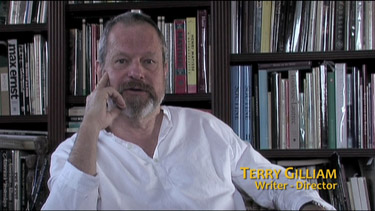 |
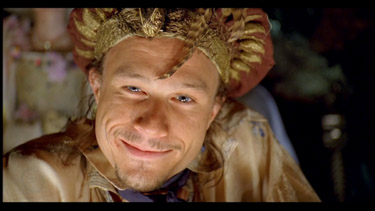 |
 |
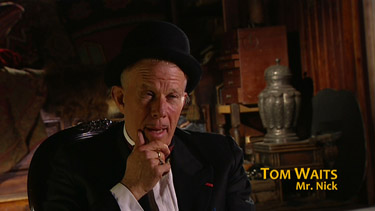 |
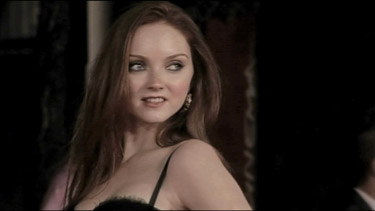 |
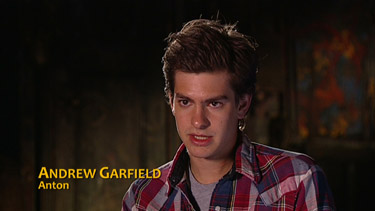 |
Bottom line:
8
The Imaginarium of Doctor Parnassus, its faults
notwithstanding, is a fascinating experience that I expect
to enjoy all the more the second time around. Image quality
is very good, though challenging to one's equipment and
theatre environment. Extra Features are extensive and
worthwhile. Warmly Recommended.
Leonard Norwitz
May 2nd, 2010
![]()
![]()

![]()
![]()
![]()
![]()

![]()
![]()

